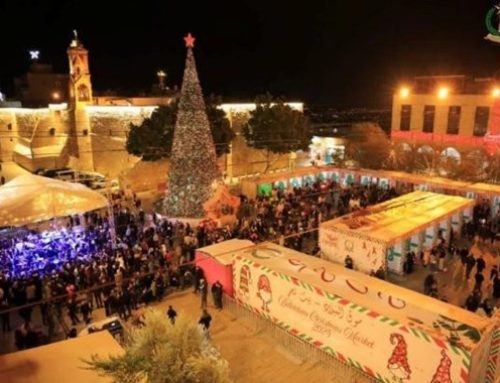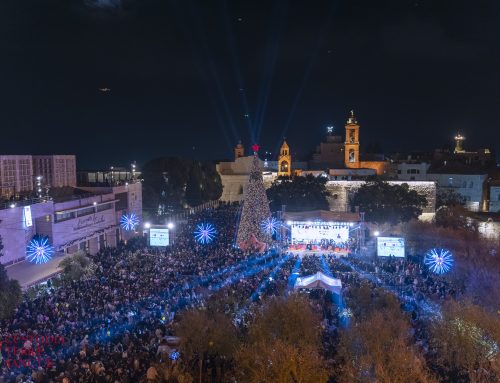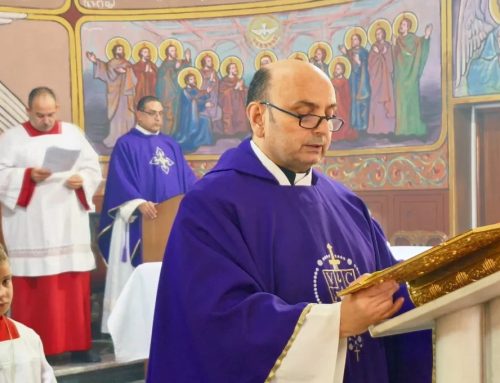“Christmas: Hope for Peace”
Luke 2:25-38
Imagine having to wait for something for 84 years!
Imagine having to wait
•For something very important.
•For something promised to you with continued reassurances.
•For something that will be life changing.
•For something that has been delayed again and again.
•For something where others have already given up hope.
•For something that is at the heart of your religious beliefs.
This is the story of Anna who plays an important part at the end of Luke’s Christmas account when Joseph and Mary bring the infant Jesus to the temple. Anna, described, by Luke as a prophet, had married young, was widowed after only seven years and then lived to the age of 84 years, waiting patiently all the while.
This is also the story of Simeon, whom Luke pairs with Anna in the Temple Presentation account. Simeon, described by Luke as filled with the Spirit, blesses the child Jesus, now as Simeon himself has reached old age, perhaps 84 years as Anna, perhaps even older.
Imagine having to wait all these years. Imagine waiting and wondering if God would indeed keep his word, if the promise would indeed be fulfilled, if the Messiah would indeed appear. Simeon and Anna were both described as waiting:
•Simeon “looking forward to the consolation of Israel.” (verse 25)
•Anna “looking for the redemption of Jerusalem.” (verse 38}
This detail, that Anna was 84 years old and that Simeon was approaching death of old age, means that they had lived through almost the entire first century Before Christ with all its earth shattering events:
•The battles and expansion of territory of the newly independent Jewish Hasmonean rulers with their own political agenda and their own message of hope.
•The arrival of Roman occupation led by the Roman General Pompey and its continuation for nearly six decades before that first Christmas.
•The murder of Julius Caesar, the civil wars between Octavian and Antony, and intrigues in Egypt with Cleopatra.
•The Age of Augustus and the 35 year reign of terror by his client king Herod.
•Herod’s political replacement of the temple high-priesthood.
•Herod’s political assassinations of potential successors including his own sons.
•Economic downturn with heavy taxation and a growing peasant class.
•Increase of illness and disease due to deteriorating living conditions.
•Suffering from natural disasters like the earthquake of 29 B.C., which brought a temporary halt to the Qumran community.
•An increase in Messianic pretenders and false claims of salvation.
The conditions of this ancient world of Anna and Simeon seem no different than what the modern world is experiencing during these days approaching Christmas:
•The wait that occurs with the Arab Spring with millions of people seeking human rights, basic freedoms, and democratic governments, while totalitarian regimes rise up to suppress and oppress.
•The wait of Palestinians for statehood and an end to occupation.
•The wait of Israeli children to live without fear and in security.
•The wait that occurs because of the world-wide economic recession while political leaders seek policies that protect the wealthy and powerful.
•The wait that occurs for people unemployed and seeking new jobs.
•The wait that occurs in longer lines for government assistance.
•The wait that occurs for emigrants seeking a better life away from their ancestral homes.
•The wait for people suffering from cancer, HIV/ AIDS, or other disease.
•The wait for those having lost loved ones or estranged in broken relationships.
•The wait for those who have lost homes from earthquakes.
•The wait for those who have lost fields from flooding.
•The wait for those who have lost everything from the severe drought in East Africa and its resulting famine.
•The wait for those who have trusted misguided solutions and who are lost in despair.
Imagine waiting for all these years as did Anna and Simeon.
Yet theirs is the example of patient waiting in hope. Simeon has trusted the promise that “he would not see death before he had seen the Lord’s Messiah.” (verse 26) Anna likewise never left the temple night and day. (verse 37)
Anna and Simeon are characterized by their faith. Faith and hope exist together. The Reformer John Calvin said, “Hope is the inseparable companion of faith.” Faith believes in God, and hope awaits the moment when this truth is confirmed. Faith is the basis for hope, and hope perseveres to feed and affirm and renew faith’s vitality. Theologian Jürgen Moltmann says, “In the Christian life faith has the priority, but hope the primacy” (Theology of Hope, 2002). Without hope, faith weakens and dies. A human being is enlightened by faith to the way of real life; however, hope alone keeps faith in the right way. Martin Luther says, “Therefore faith is like dialectic, which conceives the idea of all the things that are to be believed, and hope is like rhetoric, which develops, urges, persuades and exhorts to steadiness, so that faith does not collapse in temptation but keeps the word and holds firmly to it” (Luther’s Works, 23-24).
Anna and Simeon are characterized by faith and also by their steadfast hope. It would have been easy for them to leave Jerusalem to emigrate to one of the prosperous urban centers of the Roman Empire where others had settled. It would have been easy for them to have joined one of the religious communities seeking answers in the wilderness environments of physical deprivation. It would have been easy for them to have sought enlightenment in another place through philosophic teaching or one of the “newer” religions spreading through the Mediterranean world. Yet they stayed in Jerusalem. They continued without wavering at the Temple. They remained where they had been called. They were steadfast in their hope.
This is the reason we call upon Palestinian Christians not to leave Jerusalem and the Holy Land. This is why we appeal to them to remain steadfast in the Holy Land, waiting in hope. As Paul says, “Put on Christ,” for salvation is nearer than you think, “nearer to us now than when we became believers.” (Romans 13:11).
Anna and Simeon are characterized also by an edifying and uplifting spirituality. Three times, Luke calls attention to the role of the Spirit—that the Spirit rested on Simeon in a continuous prophet-like way, that the Spirit had revealed to him that he would see the Messiah before he saw death, and while guided by the Spirit he was present at the temple on that day, at that very hour, when Joseph and Mary arrived with the holy child. (verses 25-27). Their presence at the temple was not in quiet, passive contemplation, they worshipped actively with prayer and fasting. (verse 37) This is the admonition of Paul– to “Pray without ceasing”–to the Thessalonians who have grown tired of waiting after only a few months. (1 Thess. 5:17).
In this time of a shattering of human hopes, of economic recession, of growing injustice and extremism, we call upon Christians of the Middle East to a revival of spirituality and prayer for our Lord to incarnate our manger in these present circumstances so that we may be inspired why the Babe calls us to stay and witness. Such spirituality is not a means of escape, but of making real the incarnation of Christ of hope and love, with confidence that nothing can separate us from the love we have in Christ Jesus. (Romans 8).
Anna and Simeon are characterized also by their life in community. Waiting is made easier by community support. It might be tempting to see Simeon and Anna as lonely characters—as we often due for those who have lost friends and loved ones growing old. Yet they are not alone, but they receive support from the community that gathers at the temple. The implication is that they are fully participating in the worship led daily by the priests, the burning of incense, the prayers three times a day, the Aaronic blessing of the high priest. When the holy family departs for Nazareth, Simeon and Anna are not left alone, but are engaged interacting with “all who were looking for the redemption of Israel.” (verse 38). This is a sense of community that continued in the early chapters of the book of Acts, when the Christians “devoted themselves to the apostles’ teaching and fellowship, to the breaking of bread and the prayers.” (Acts 2:42). And it is alive in the churches of the ELCJHL today in worship, in its education programs, and youth and women’s programs.
Finally Anna and Simeon were prophetic in their proclamation. Their reputations were well known so that the crowds apparently gave them a hearing. Their message included wondrous words of Good News: that this child was the instrument of God’s “salvation, prepared in the presence of all people,” (verse 30) that he was the “Lord’s Messiah,” (verse 26), that he was “A light for revelation to the Gentiles and for glory to your people Israel.” (verse 32) It was indeed Good News. Yet as a prophetic, spirit-guided word, it spoke in truth concerning “the falling and rising of many in Israel.” (verse 34). It would even be like a “sword” piercing the soul of the young mother Mary. (verse 35).
This is also the reason that the Middle East Council of Churches has spoken again of Christians as an integral part of the Middle East fabric of society. They have played and they will continue to play a constructive role as bridge builders seeking freedom and dignity for every human being, regardless of religion, gender, or political affiliation. The Middle East is the cradle of Christianity and Christ calls us to be prophetic to assure our role even amidst difficulties that God’s justice will be incarnate in every country of the Middle East.
We Christians have always lived in this country as an integral part of society with roots deep in Middle Eastern soil so that we continue to play a part in building this whole nation. We are very saddened when we hear nowadays that churches of Iraq, Egypt, and others are vandalized and burned, and we wonder, is this still the Middle East where we grew up together in an integrated society with opportunity for co-existence and respectful living together. Today we must pray for our brothers and sisters who face persecution. At the same time, as I said to the Middle East Council of Churches, it is the role of Christians to remain steadfast in order to serve as agents of moderation and initiators of dialogue. As a Christian, I condemn this new trend of extremism that is trying to uproot our historical good relations that we continue to experience in the Holy Land and Jordan.
The church in the Middle East at this moment has its role to be like Anna and Simeon, to be prophetic, speaking the truth to power, but at the same time to give hope in a seemingly hopeless situation. I would call upon the politicians of the world, those of Israel and Palestine, and in particular those of the United States and Europe to hear the voice of the silent majority among Israelis and Palestinians who are longing for peace and who are exasperated with the language of war and conflict. I call upon leaders to push forward the vision of a two-state solution according to international legitimacy and with a shared Jerusalem that this dream will be incarnated in everyone’s heart and life.
The children of both nations desire to live together in peace, to find reconciliation based on forgiveness, to see the day when justice and peace kiss each other (Psalm 85:10), the lion lying down with the lamb (Isaiah 11:6), Palestinians and Israelis seeing the fulfillment of a dream of a land of milk and honey for both. Are you ready to give this hope to them?
Imagine having to wait for all those years.
Yet Anna and Simeon were able to wait in hope in spite of their difficult circumstances, in spite of their challenging times. Their faith, their steadfastness, their edifying and uplifting spirituality, their community support, and their prophetic message equipped them and enabled them in their long years of waiting.
In the same way today, in our difficult circumstances and in our challenging times, we can learn from them as we wait in hope, not in resignation.
This Christmas, may we be blessed with the words of Simeon:
“Lord, now you are dismissing your servant in peace, according to your word; For my eyes have seen your salvation which you have prepared in the presence of all peoples.”
Simeon and Anna must have thought that it could never happen in their lifetimes. They must have had doubts and second thoughts. They must have questioned the promises. Yet they continued to live in faith with a hope that was unshaken. They remained steadfast in Jerusalem, finding support in community. They did not hesitate to speak forth a prophetic word. And through their patient waiting their eyes saw the salvation prepared for them and the whole world. Christ was born in a manger—good news for all people.
I pray that this model of hopeful waiting of Anna and Simeon may now exhibit itself in the people of the Middle East.
Merry Christmas and a Blessed New Year in 2012!
tible Donation Makes a Difference!
Merry Christmas and a Blessed New Year in 2012!
Yours in Christ,
Bishop Dr. Munib A. Younan
The Bishop of the Evangelical Lutheran Church in Jordan and the Holy Land
Source :https://www.elcjhl.org/Admin/Bishop/2011.12_BishopYounan_ChristmasMessage.asp





